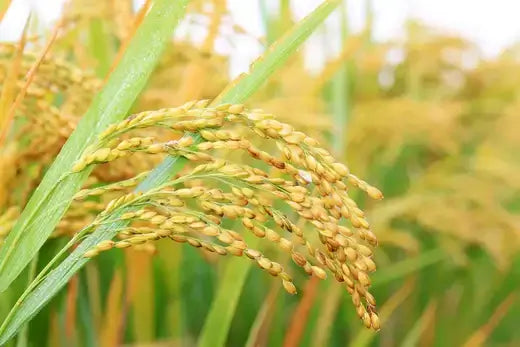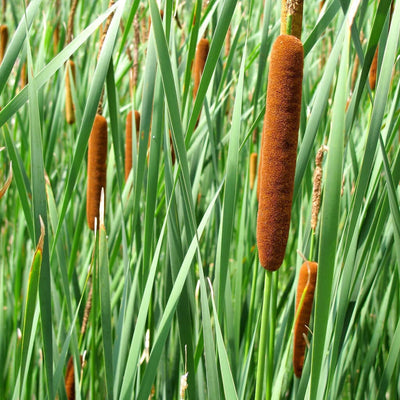Wild Rice: Planting and Care – An Insight into Cultivating This Wonderful Plant
Homeowners are offered several possibilities when it comes to planting wild rice given that it is a unique and beautiful plant. Furthermore, it can be used as compost, which is beneficial to both people and animals. If you are considering planting wild rice, you have come to the right place because this post will provide you the guidance and knowledge on how to plant and care for the plant. This post aims to assist you in obtaining the utmost best from this extremely wonderful plant.
Wild Rice's Growth Characteristics
Like other rice plants, this organism is unique as it grows in water unlike other plants. During its growth period, the rice has to be submerged underwater for it to grow. This plant has access to water which means it obtains the necessary support as well as other growth factors. This prevents the plant from growing problems that arise in the absence of enough moisture in the soil.
The wild rice plants thriving at the water's edge exhibit a unique phenomenon. The luxuriant basal and whorled leaves float on the surface, reaching a remarkable 24 inches in length and attaining remarkable smoothness. Beneath the water's surface, the United States wild rice plant's staminate flowers emerge from the plant below in chains, each 24 inches in length but barely noticeable among the splaying tufts of lower branches. Dense wild rice plants stay intertwined, creating the illusion of a cluster of rams in a bay.
Attractive from the wetland margins, each upper limb showcases a flower cluster that ascends in a singular, vertical fashion, with lower branches festooned with a wild array of blossoms. The many flowers borne from each spikelet, or small flowering branches, in the spike, devour the wild rice plant in a glorious, breathtaking splendor. Not many water plants possess such remarkable traits. The wild rice is functional and beautiful – a captivating addition to any pond. Too bad it’s submerged, hidden just below the water’s surface. The wild rice plant is probably the last thing most people would think to grow, but such plants provide a level of intrigue that other types of aquatic plants do not.
Blooming and Harvesting Wild Rice
Wild rice blooms between July and October. The blooms are small and fragile, showing light white or other neutral colors. The rest of the environment is filled with the same colors, and that is why the blooms are able to blend into the scenery. After waiting for the blooms, you are able to collect the rice grains that formed on the flowers.
Collecting the wild rice is an exciting activity because you can eat the rice or sell it to farms for animals to eat. Since wild rice is full of nutrition, it can be made into many different meals, such as soup, salad, and a side dish. Because it is rare and many people want to use it, it is perfect for your pantry or as a unique crop to grow and sell.
Planting Wild Rice
A proper planting of wild rice requires firm soil and complete sunlight exposure. Its direct sun to assist it on its growing and nourishing stages. It is most favorable to cultivate wild rice cultivars in OPEN ecotopes like ponds and fields as sites devoid of tree and plant cover can serve as better protection for. Its most favorable planting sites are shallow submerged zones of water bodies.
How to Plant Wild Rice
Identify the Best Site: Well-submerged shallow ponds, lakes, and marshes are favorable for wild rice planting, but make sure the water is shallow as the plant prefers a shallower environment.
Soil Prep: Wild rice requires firm, rich, and compact soil to prevent it from floating and getting lost. The soil may need to compact and possibly be reconditioned with organic compost to anchor the wild rice better.
Sunlight: More sunlight exposure correlates with better growth and increased productivity of the wild rice plant.
Plant Seeds: Wild rice seeds can be planted in late spring or early summer by putting them directly into the soil that is submerged in water.
Care and Maintenance
These plants have pretty minimal care needs, just make sure the plant is submerged in water. Make sure the plants also get direct sunlight, as the plant needs regular sunlight to survive.
Wild rice grows with no complications, however, it does require a boost of nutrients during the growing season and the addition of organic compost on occasion. Wild rice grows robustly in areas with moderate moisture and during dry seasons, control the water levels in the soil and in the rice planting areas.
Wild Rice: An Underappreciated Water Resource
Wild rice isn’t only a stunning plant with a towering stature. The plant sustains a multitude of life, being a reservoir of food and nutrition. Wild rice can also be harvested to be consumed, and the plant has also found its way in animal fodder. Finally, the plant can as well be used to beautify landscaping, especially in ponds and wetlands.
Other plants that can be used to liven up your garden or yard include:
-
Water lilies: Water lilies also tend to wetlands just like the previously mentioned plant and are a delightful addition to water gardens.
-
Lotus: Another water plant, the lotus makes ponds more pleasing to the eye with its large blooms that provide a tranquil ambiance.
-
Cattails: These can grow on the banks of ponds and are known to thrive in moist areas.
-
Reeds: These can be planted on the water's edge to form dry ground and are helpful in wetland areas.
Discover Other Offers at TN Nursery
If you want to grow wild rice or any other unique plants in your garden, visit TN Nursery, an online nursery shop you can trust. TN Nursery, an online nursery shop you can trust, has an extensive collection of plants, from aquatic plants to trees and shrubs, and it fulfills your planting needs with unmatched quality
FAQs
When should wild rice be planted?
Wild rice is planted during the warm months of spring and the cool months of summer. One lags behind the other where the water is still chilly but on the brighter side enough to spawn growing. Finding the right time for planting depends on the climate you live in, but water level with the right temperature to germinate is the general rule.
What is the disadvantage of wild rice?
One of the major disadvantages of wild rice is that it needs specific growing conditions. First, it needs soil that is both shallow and rich in nutrients. Additionally, it needs water, so it is situational. As a result, it can be very limiting for growing. On top of all of that, the area it is growing might vary, so the sow might need maintained a lot.
How hard is it to grow wild rice?
Wild rice can be easy to grow, but it does still need shining attention to water conditions as well as the prep of soil. It prefers shallow water where the soil is soft and rich with nutrients. It needs sun, and if grown in a shaded area, it will have a very difficult time.
Does wild rice grow back every year?
Yes, wild rice is a perennial plant which means, if looked after, it will grow back every year. It does have some requirements with water environments, so make sure the conditions are suitable for it every season.
Will deer eat wild rice?
Typically, deer will not eat wild rice because they do not like to eat plants that grow in water. Nevertheless, they may in times of need eat the young shoots or other vegetation that grows around the rice. If you do not want deer to eat your rice, then you may need to put fencing or some other form of protection around it.
Does wild rice reseed itself?
Yes, wild rice is able to reseed itself. The plant itself drops seeds which can be carried away by water to new areas. Still, to ensure the best harvest, it is best to plant seeds in the concentrated areas.


